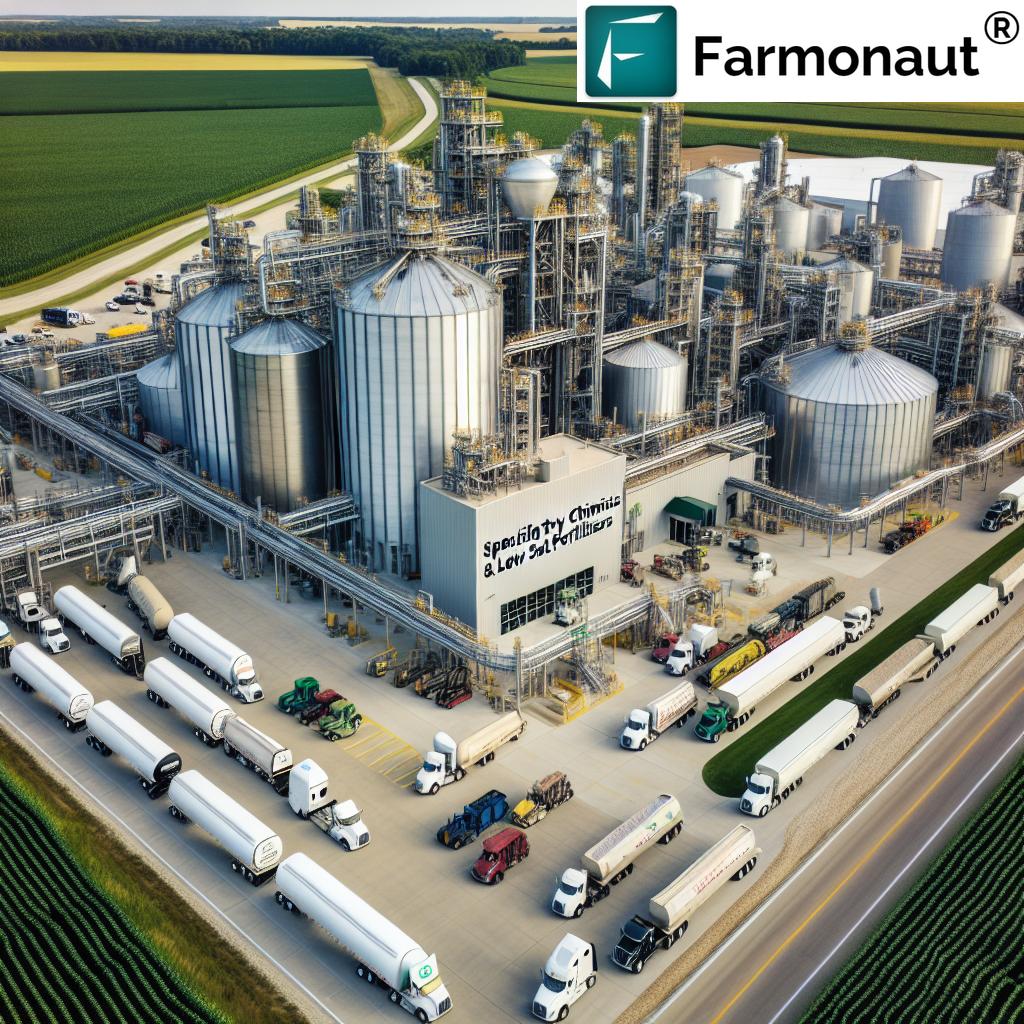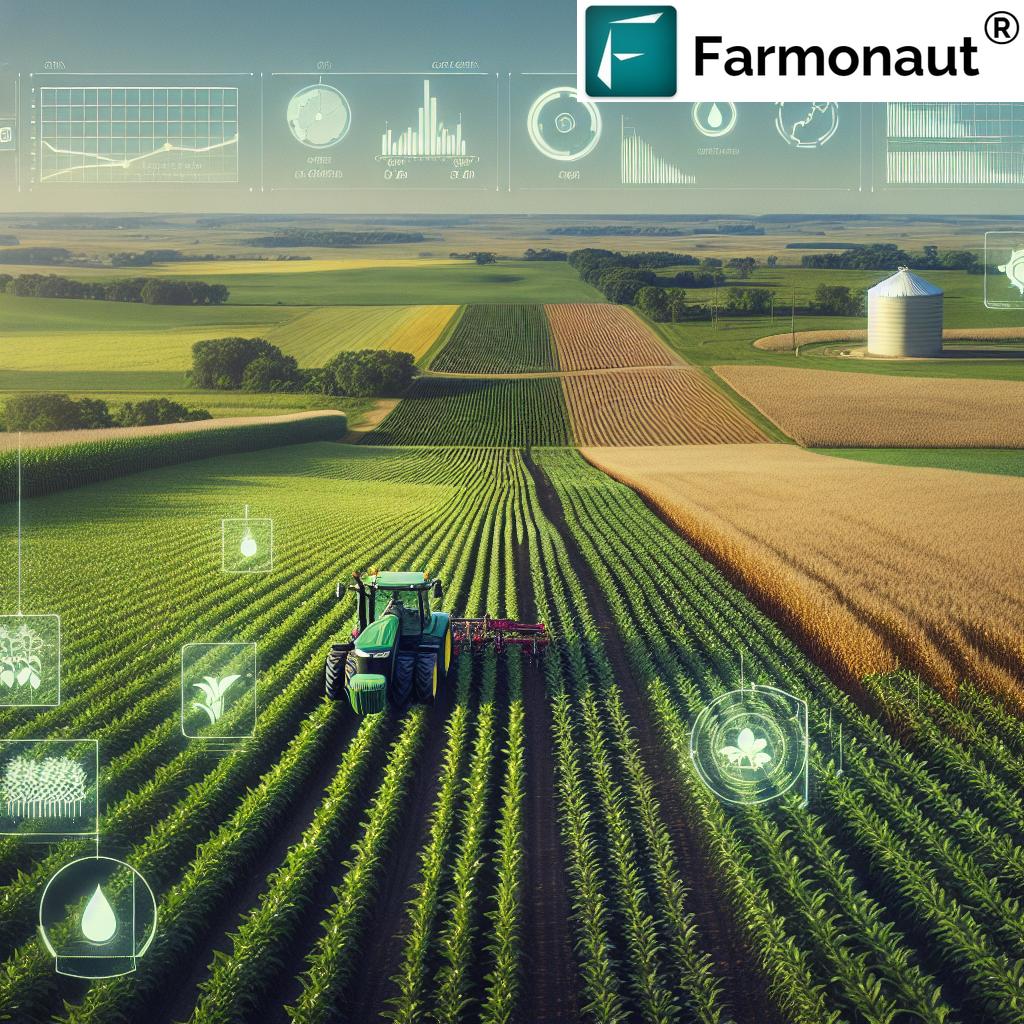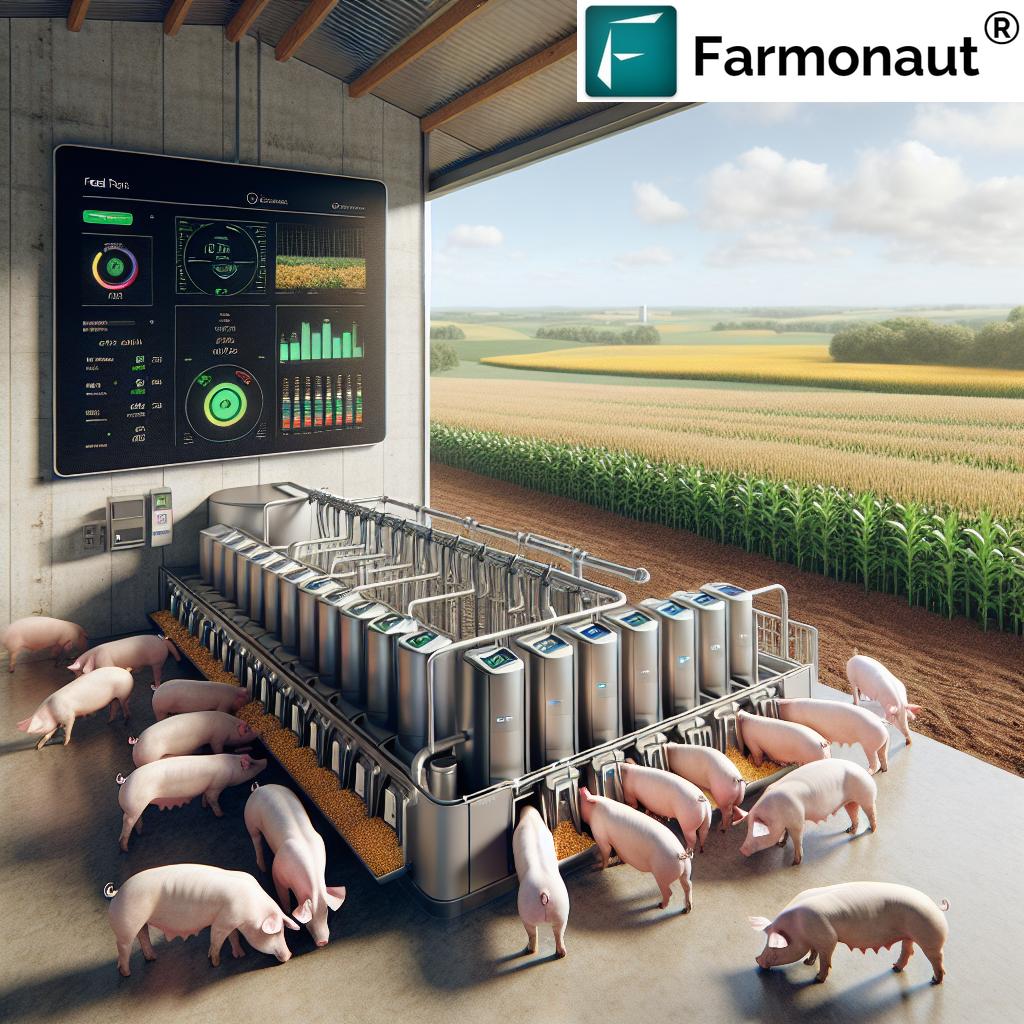Autumn Farm Safety: Essential Tips for Managing Electrical Hazards and Weather Risks in Northern Agriculture

“Over 60% of farm-related electrocutions occur during harvest season, making autumn a critical time for electrical safety awareness.”
As the leaves begin to turn and the air grows crisp, autumn ushers in a busy season for farmers across Northern Ireland and beyond. At Farmonaut, we understand the unique challenges that come with this time of year, particularly when it comes to farm electrical safety and managing autumn agricultural hazards. In this comprehensive guide, we’ll explore essential tips for navigating the risks associated with changing weather patterns and electrical hazards on farms, ensuring a safer and more productive harvest season.
The Importance of Farm Safety Awareness in Autumn
Autumn is a critical time for farmers, with harvest activities in full swing and preparations for winter underway. However, this bustling period also brings increased risks, especially in terms of electrical safety and weather-related hazards. As we delve into the specifics of farm machinery safety tips and weather risks in agriculture, it’s crucial to remember that vigilance and preparation are key to preventing accidents and ensuring a successful season.
Electrical Hazards on Farms: A Primary Concern
Farm electrical safety is paramount, particularly during the autumn months when the use of machinery and equipment intensifies. Here are some critical areas to focus on:
- Power Line Safety for Farmers: Overhead power lines pose a significant risk, especially when operating tall equipment like combines or grain augers. Always maintain safe distances and be aware of your surroundings.
- Electrical Equipment Inspection: Regularly inspect all electrical equipment, including wiring in barns and outbuildings. Moisture and rodent damage can be more prevalent in autumn, increasing the risk of electrical fires or shocks.
- Proper Grounding: Ensure all electrical systems are properly grounded, particularly in areas prone to dampness or where livestock are housed.
Weather Risks in Agriculture: Autumn Challenges
The changing weather patterns in autumn present unique challenges for farmers. Understanding and preparing for these risks is essential for maintaining safety and productivity:
- Unpredictable Rainfall: Increased rainfall can lead to muddy conditions, affecting machinery operation and increasing the risk of slips and falls.
- Early Frost: Sudden temperature drops can impact crops and create hazardous conditions on farm roads and pathways.
- Strong Winds: Autumn storms can bring strong winds, posing risks to structures, trees, and power lines.
At Farmonaut, we provide real-time weather data and forecasts through our satellite-based farm management solutions, helping farmers stay ahead of these weather-related challenges.
Farm Machinery Safety Tips for Autumn
As harvest activities ramp up, machinery safety becomes even more critical. Here are some essential tips to keep in mind:
- Regular Maintenance: Conduct thorough inspections and maintenance on all farm equipment before heavy use.
- Visibility Measures: Ensure all machinery is equipped with proper lighting and reflective materials, especially important during shorter autumn days.
- Training and Awareness: Provide refresher training for all workers on safe machinery operation, emphasizing the specific risks associated with autumn conditions.
Grassland Management and Safety
Proper grassland management is crucial in autumn, not only for productivity but also for safety:
- Soil Compaction: Be mindful of soil conditions when operating heavy machinery on grasslands to prevent compaction and maintain soil health.
- Weed Control: Address issues like docks and other weeds that can affect grassland quality and potentially harbor pests or diseases.
- Grazing Management: Implement rotational grazing strategies to maintain healthy swards and reduce the risk of livestock-related accidents.
Farmonaut’s satellite imagery can help farmers monitor grassland health and make informed decisions about management practices.
Livestock Safety in Changing Conditions
Autumn brings changes that can affect livestock, requiring extra attention to their safety and well-being:
- Shelter Preparation: Ensure barns and shelters are weather-proof and well-ventilated to protect animals from harsh conditions.
- Feeding Adjustments: Adapt feeding strategies to meet the changing nutritional needs of livestock as temperatures drop and grass quality changes.
- Health Monitoring: Be vigilant for signs of illness that may be exacerbated by changing weather, particularly in young or vulnerable animals.
“Weather-related incidents account for approximately 25% of all agricultural accidents, highlighting the importance of seasonal risk management.”
Implementing Safe Farming Practices
Adopting safe farming practices is essential for protecting workers, livestock, and the environment. Here are some key areas to focus on:
- Personal Protective Equipment (PPE): Ensure all workers have appropriate PPE for their tasks, including weather-appropriate gear.
- Emergency Preparedness: Develop and communicate clear emergency procedures for various scenarios, including electrical accidents and severe weather events.
- Environmental Considerations: Implement practices that minimize environmental impact, such as proper slurry management and responsible use of agricultural chemicals.
Autumn Farm Maintenance: A Safety Perspective
Autumn farm maintenance is crucial for ensuring safety throughout the season and preparing for winter. Key areas to address include:
- Building Inspections: Check all farm buildings for structural integrity, paying special attention to roofs and drainage systems.
- Electrical Systems: Conduct thorough inspections of all electrical systems, including those in dairy parlors and sheep sheds.
- Machinery Storage: Prepare clean, dry storage areas for machinery to prevent deterioration and ensure safety when equipment is needed again.
Agricultural Risk Management Strategies
Effective agricultural risk management is essential for protecting your farm business. Consider these strategies:
- Insurance Review: Reassess your insurance coverage to ensure it adequately protects against autumn-specific risks.
- Financial Planning: Plan for potential weather-related disruptions and their impact on cash flow and budgets.
- Diversification: Consider diversifying crops or income streams to mitigate risks associated with weather or market fluctuations.
Farmonaut’s data-driven insights can assist in making informed decisions about risk management strategies.
Leveraging Technology for Farm Safety
At Farmonaut, we believe in the power of technology to enhance farm safety and efficiency. Our satellite-based farm management solutions offer:
- Real-time Crop Monitoring: Track crop health and identify potential issues before they become safety hazards.
- Weather Forecasting: Access accurate, localized weather forecasts to plan farm activities safely.
- Resource Management Tools: Optimize the use of machinery and resources, reducing the risk of accidents due to overuse or fatigue.
Explore our API for integrating these powerful tools into your existing farm management systems.

Community and Rural Life: Working Together for Safety
Farm safety is not just an individual concern but a community responsibility. Here’s how we can work together:
- Knowledge Sharing: Participate in local farming networks to share safety tips and best practices.
- Community Awareness: Educate the wider rural community about farm safety, especially during busy seasons like autumn.
- Support Systems: Establish support networks for farmers to help manage stress and maintain mental health, which is crucial for overall safety.
Sustainable Farming and Safety: A Synergistic Approach
Sustainable farming practices often go hand in hand with improved safety measures. Consider these environmentally friendly approaches that also enhance safety:
- Reduced Chemical Use: Implementing integrated pest management techniques can decrease exposure to harmful chemicals.
- Soil Conservation: Practices that improve soil health can also reduce machinery-related risks by improving field conditions.
- Energy Efficiency: Upgrading to energy-efficient systems can reduce electrical hazards while lowering environmental impact.
Farmonaut’s API Developer Docs provide information on how our technology can support sustainable and safe farming practices.
Preparing for the Future: Long-term Safety Planning
While focusing on immediate autumn safety concerns is crucial, it’s equally important to plan for long-term safety improvements:
- Infrastructure Investments: Plan for upgrades to farm buildings and electrical systems that will enhance safety for years to come.
- Training Programs: Develop ongoing safety training programs for all farm workers, including seasonal staff.
- Technology Adoption: Stay informed about emerging technologies that can improve farm safety and efficiency.
Autumn Farm Safety Checklist
| Safety Category | Hazard | Risk Level | Mitigation Measure |
|---|---|---|---|
| Electrical | Overhead Power Lines | High | Maintain safe distances when operating tall equipment |
| Weather | Unpredictable Rainfall | Medium | Improve drainage systems and use weather-resistant equipment |
| Machinery | Equipment Malfunction | High | Conduct regular maintenance and pre-use inspections |
| Livestock | Animal Stress | Medium | Provide adequate shelter and monitor for signs of distress |
| Grassland | Soil Compaction | Medium | Limit heavy machinery use on wet soil |
| Buildings | Structural Damage | High | Perform thorough inspections and repairs before winter |
| Personal Safety | Fatigue | High | Implement proper work-rest schedules during harvest |
| Chemical | Pesticide Exposure | High | Use proper PPE and follow application guidelines strictly |
| Environmental | Slurry Gas | High | Ensure proper ventilation when handling slurry |
| Fire | Hay Spontaneous Combustion | Medium | Monitor moisture levels and store hay properly |
Conclusion: Embracing Safety for a Prosperous Autumn
As we navigate the challenges of autumn farming, let’s remember that safety is not just a precaution—it’s a cornerstone of successful and sustainable agriculture. By staying vigilant about electrical hazards on farms, preparing for weather risks in agriculture, and implementing comprehensive safe farming practices, we can ensure a productive and secure harvest season.
At Farmonaut, we’re committed to supporting farmers with cutting-edge technology and data-driven insights that enhance both safety and efficiency. Together, we can create a safer, more resilient agricultural sector that thrives in the face of autumn’s challenges and beyond.
FAQs
- Q: How often should I inspect my farm’s electrical systems?
A: We recommend conducting thorough electrical inspections at least twice a year, with one specifically before the autumn harvest season begins. - Q: What are the most common weather-related risks for farms in autumn?
A: The most common risks include unpredictable rainfall, early frosts, and strong winds associated with autumn storms. - Q: How can Farmonaut’s technology help with farm safety?
A: Our satellite-based solutions provide real-time crop monitoring, accurate weather forecasts, and resource management tools, all of which contribute to safer farm operations. - Q: What should I include in my farm’s emergency preparedness plan?
A: Your plan should include procedures for electrical accidents, severe weather events, machinery malfunctions, and medical emergencies. Ensure all workers are familiar with these procedures. - Q: How can I improve the safety of my grassland management in autumn?
A: Focus on proper soil management to prevent compaction, implement rotational grazing, and be vigilant about weed control to maintain healthy swards.




















